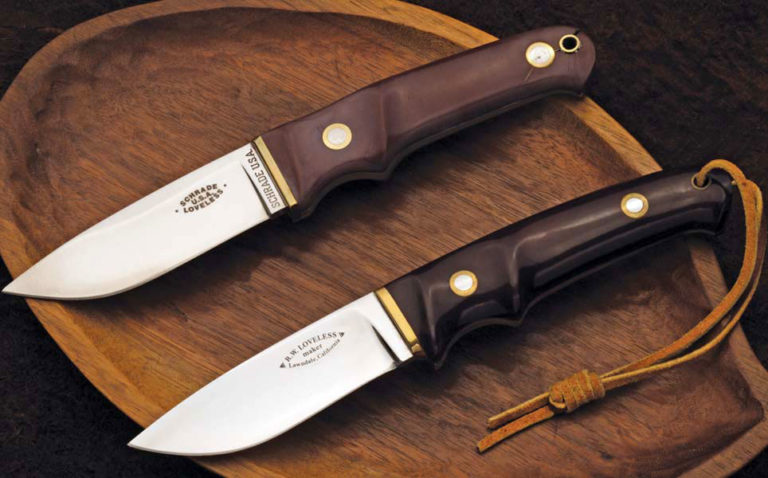
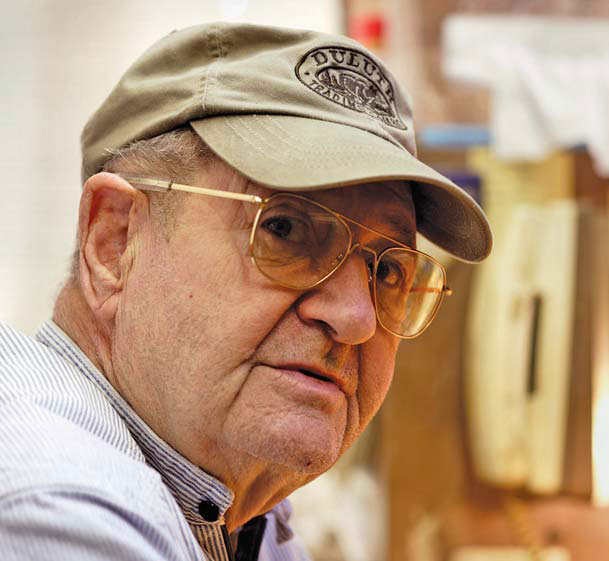
“Bob is most likely the best designer to ever produce a knife, as design after design was just right,” John Denton observed.
Too often, it seems, the mediocre is celebrated. Descriptive terms like “legendary” and “timeless” are handed out with reckless abandon. But few would argue that the terms are fitting when applied to BLADE Magazine Cutlery Hall-Of-Fame© member R.W. “Bob” Loveless and the dropped hunter.
Also known as the drop-point hunter or simply the drop point, the knife grabbed the attention of the world of knives more than half-a-century ago and has remained in the limelight ever since.
“Bob Loveless didn’t invent the drop point but he sure made it popular,” remembered longtime merchant, knife advocate and Cutlery Hall-Of-Famer A.G. Russell. “Loveless was different. Loveless was magic. When his knives sold for $650 and other makers’ knives sold for $200, he said his knife was worth $200 but the mark was worth $450.”
Russell points to an article that appeared in Guns & Ammo magazine in the 1960s. It thrust Loveless and his custom knives, along with those of Harry Morseth and Merle Seguine, to the forefront.
“It made Loveless the most renowned knifemaker in America,” A.G. recalled. “In handmade patterns nobody surpassed Loveless’s drop point. Not just because it was copied, but everybody was copying it—kind of like the Randall Model 1 was copied.
“It wasn’t his best or most useful model. It was simply the most popular. His best was the semi-skinner, with a better point and belly,” Russell opined.
Global Impact of Loveless Knives
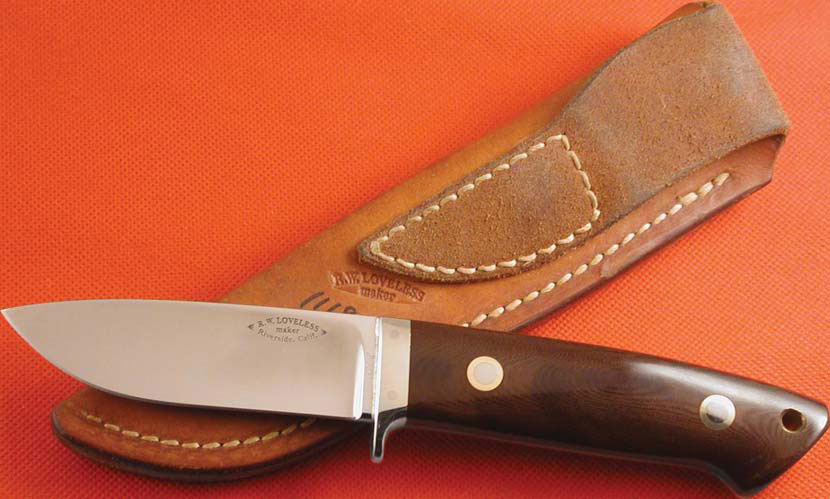
John Denton is one of the world’s foremost authorities on Loveless knives.
He has been an avid collector for decades and a purveyor of Loveless knives for many years, following in the footsteps of his late father and purveying legend J.W. Denton.
“The first time I saw a drop-point hunter was in BLADE® Magazine in the ’80s,” he recalled. “If you didn’t get BLADE Magazine, you did not know about anything in the knife world. Also, it seems that every time I liked a knife I saw in a photo I would read below it, and it would say, ‘made by R.W. Loveless.’ So there must have been something special if a photo catches you over and over in books and magazines.”
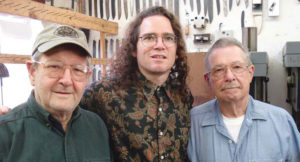
Loveless and his knives were immensely popular in Japan, and Denton surmises that the drop point was the catalyst for the Loveless explosion in the Asian market.
“The fact is that the drop point was meant to be a using tool, just like Hamada Pottery. It was utilitarian and useful. That’s the reason he was so huge in Japan, his simple design, and nothing was wasted, and the fact that it was so well balanced in the hand—never square—so that you did not feel any [unnecessary] sharp surface when working with it. Pure brilliance!”
Cutlery Hall-Of-Famer B.R. Hughes met Loveless through A.G. Russell, who had met Bob a year earlier while on a tour in 1967 that included stops at the shops of several custom knifemakers, including Loveless’s in California.
“I first saw a Loveless drop-point hunter in the dead of winter in 1968,” Hughes smiled, “when my good friend A.G. Russell called and told me that he was hosting a California maker named R.W. Loveless, who was doing some pretty special stuff with his knives, and invited me to come up for a visit.”
The roads between Hughes’ home in Texarkana, Texas, and Russell’s business in Arkansas were covered with snow at the time, but Hughes prevailed on a friend, Bill Murdock, who owned a plane and flew him over to the airport in Fayetteville.
“A.G. and Bob picked us up at the airport, and we drove to a small diner, where we had coffee and ate,” Hughes recalled. “Bob laid out several of his knives on the table and he talked. I was most impressed with the workmanship and the design of the knives, notably the extremely thinly ground blades, the full tangs, the handle design, and the tapered tangs. The overall workmanship was some of the best I had seen up to that point. Indeed, the only knifemaker of that period I would say was comparable in terms of workmanship would have been D.E. Henry.”
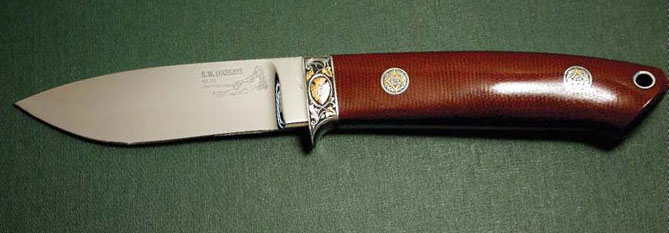
Loveless evidently struck a chord when he revived an old design and added his personal touch. The result was an utter phenomenon. His authorship was unmistakable and his mark became prized the world over.
“The drop point is not hard to make,” Denton noted. “Loveless told me that he did not like making sub-hilts because by the time he made one sub-hilt he could have made 10 or more drops. But that’s what makes his double grinds so nice. They are rare and took time to make. But Bob said 90-percent plus of his production was some sort of hunter, and of those, [mostly] the drop. He went years sometimes never making a Big Bear [sub-hilt].
“Bob is most likely the best designer to ever produce a knife, as design after design was just right,” Denton continued, “the Big Bear, the boot, New York Special, Hideouts, Chute knives. All amazing. He is much like the Ferrari of the knife world. He did it so well that everyone copies it and wants to make a drop-point hunter when they start out making knives, or they want to certainly own one if they collect knives. I just recently sold a Loveless knife to rock legend Eric Clapton. So, Loveless designs are known all over the globe.”
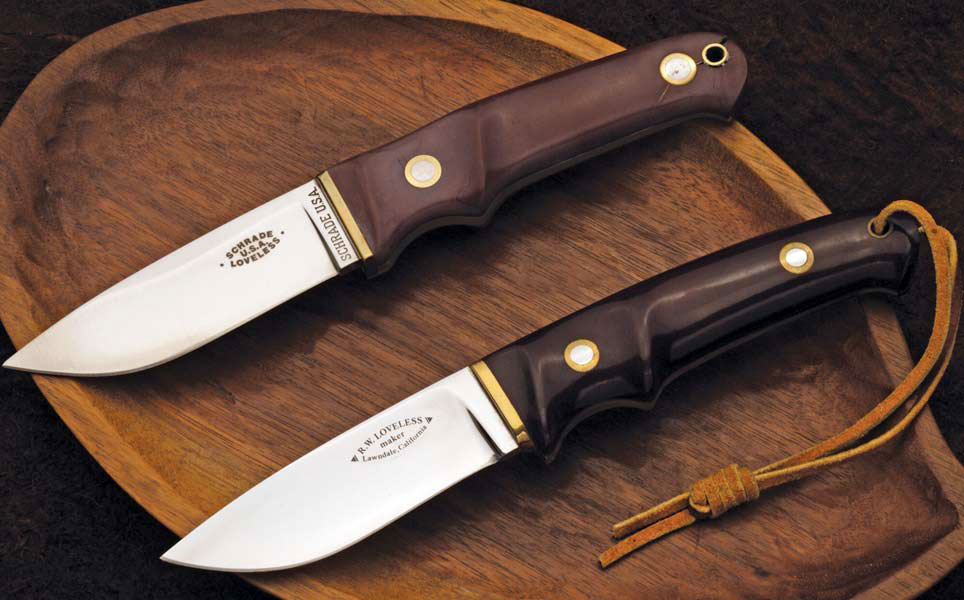
According to Denton, Loveless started making hunting knives in the 1950s and conceived his additions to the genre.
From there, John says, the rest is history. By the 1970s and ’80s, Schrade, Gerber and Beretta were among the companies offering reproductions of the drop-point hunter, so the knife’s influence captured the mass-production market as well.
Bob Loveless: Larger than Life
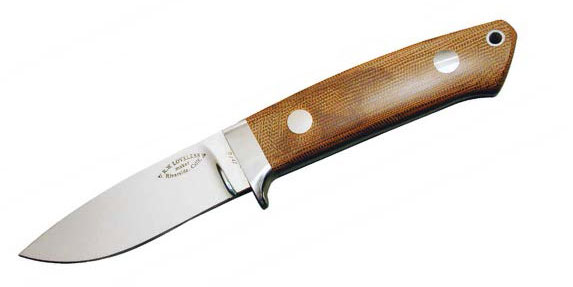
Cutlery Hall-Of-Famer D’ Holder treasures his personal relationship with the late Loveless.
“I had seen Loveless drop points in several magazines in the late ’60s,” Holder said, “but saw my first up close and real in 1973. Dan Dennehy was raising money for his move to Del Norte, Colorado, and had a Loveless drop point on his gun show table for sale. It was at the Yuma, Arizona, gun show and he was asking $125. It had stag handles and a gold escutcheon on top of the blade with [Loveless’s] name engraved in it. On the side of it was engraved, ‘To my good friend Dan, from Bob.’”
D’ bought the knife that day and owned it for 15 years before selling it to Al Williams, a renowned Loveless collector, for $1,800. Holder says he should have kept it and that it would bring at least $10,000 today.
“I would sit in my easy chair and fondle that knife for hours trying to figure out what was so special,” D’ mused. “I never came up with a clear answer other than it was a Loveless.”
For years, D’ stopped by Bob’s Riverside, California, shop while on his way to one of the West Coast knife shows.
They exchanged varying opinions of topics of the day, and even when those opinions diverged they shook hands and looked forward to the next visit.
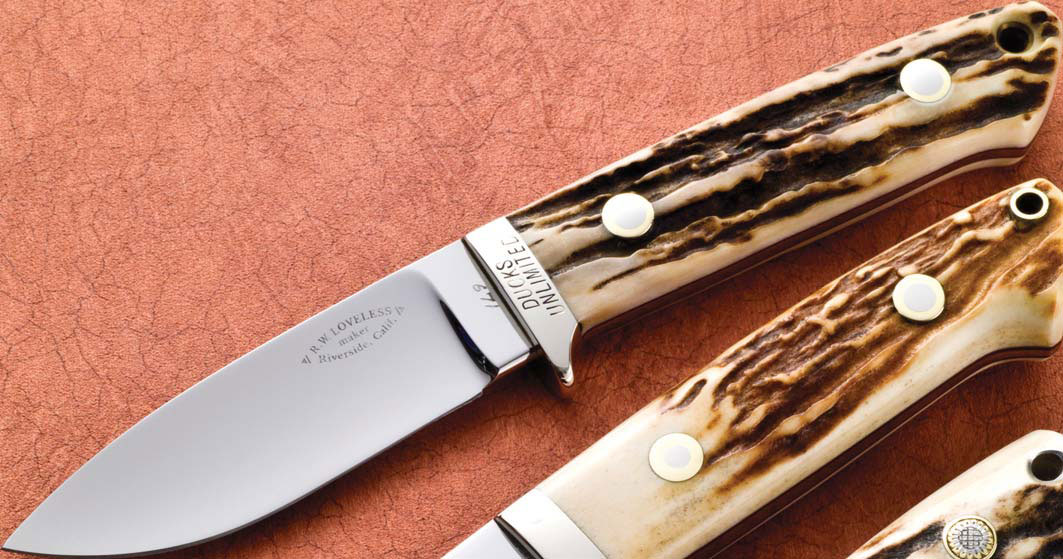
popular. “His best was the semi-skinner, with a better point and belly,” Russell opined. (PointSeven image)
“The last time we had our usual discussion and it came time to leave, I extended my hand as always,” Holder said, “and he brushed it aside and gave me a big hug, and told me how much he appreciated the visits. Several years later he came to Phoenix and spent the day with me in my shop. It was one of the highlights of my career. He was a perfect gentleman. I miss the opportunity to visit with him. I miss his personality, his gruff exterior and his friendship.”
Hughes agrees that the drop point was not the most difficult knife to make, but its impact has been enormous. He recalls Loveless taking a moment during that first meeting at the diner in Arkansas, running the edge of one of his knives against pressure. As he moved it, the edge actually rippled, something B.R. had never seen before.
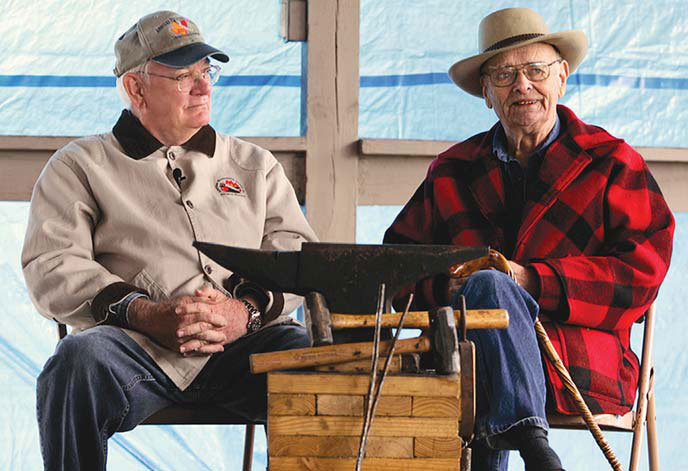
“Subsequent events indicated that it was not too difficult to turn out knives of this style and quality,” Hughes remarked, “because in a relatively short span of time at least half the stock-removal knifemakers in America were turning out pretty close copies of Loveless knives. He had an instant impact on knifemaking, almost overnight. My article on Loveless and his knives appeared sometime later in the long defunct GUNsport Magazine, of which I was shotgun editor at the time. Other articles appeared in other gun magazines. Remember, there was no BLADE, no Knives Illustrated in those days.”
In the pantheon of great custom knifemakers, Hughes says the knives of Cutlery Hall-Of-Famer Bo Randall were the most copied until Loveless came along. Then Loveless and Cutlery Hall-Of-Famer Bill Moran became the most influential cutlers in America and perhaps the world.
“Moran virtually singlehandedly saved bladesmithing from extinction, and Loveless transformed stock-removal knifemaking,” he concluded. “Anyway, that is my take.”
The drop-point hunter stands out among the rest because of the times, the look, the feel, the mark, and of course, the source of it all—larger than life—Bob Loveless himself.
Discover the Secrets to Bob Loveless’s Knives
 NEXT STEP: Download Your Free KNIFE GUIDE Issue of BLADE Magazine
NEXT STEP: Download Your Free KNIFE GUIDE Issue of BLADE Magazine
BLADE’s annual Knife Guide Issue features the newest knives and sharpeners, plus knife and axe reviews, knife sheaths, kit knives and a Knife Industry Directory.Get your FREE digital PDF instant download of the annual Knife Guide. No, really! We will email it to you right now when you subscribe to the BLADE email newsletter.


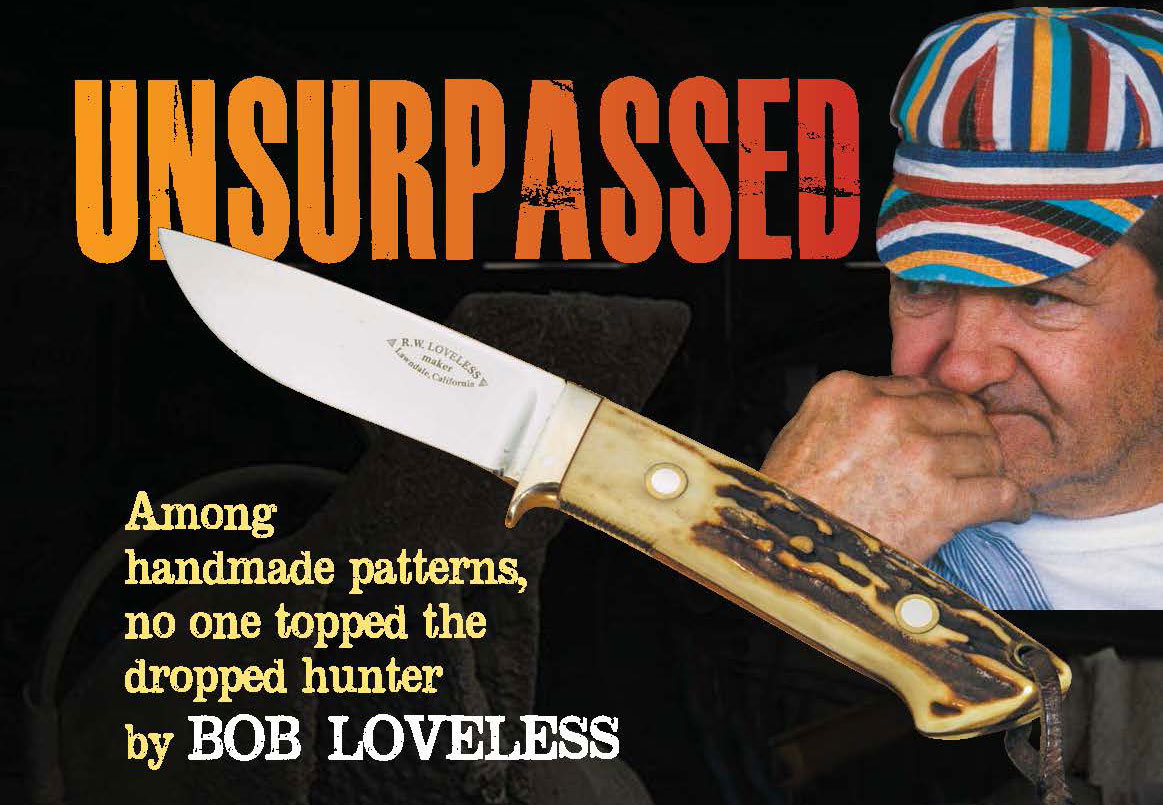
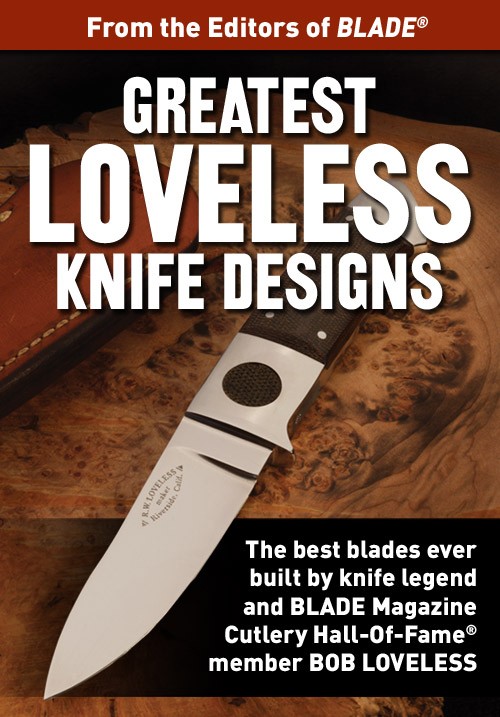





Nice article Mike, just wondering why you didnt bother to contact us here at the Loveless Shop for any of the information that you needed for your story.